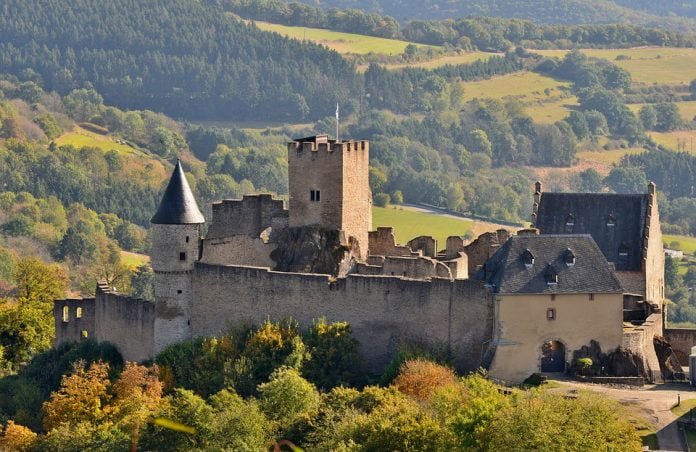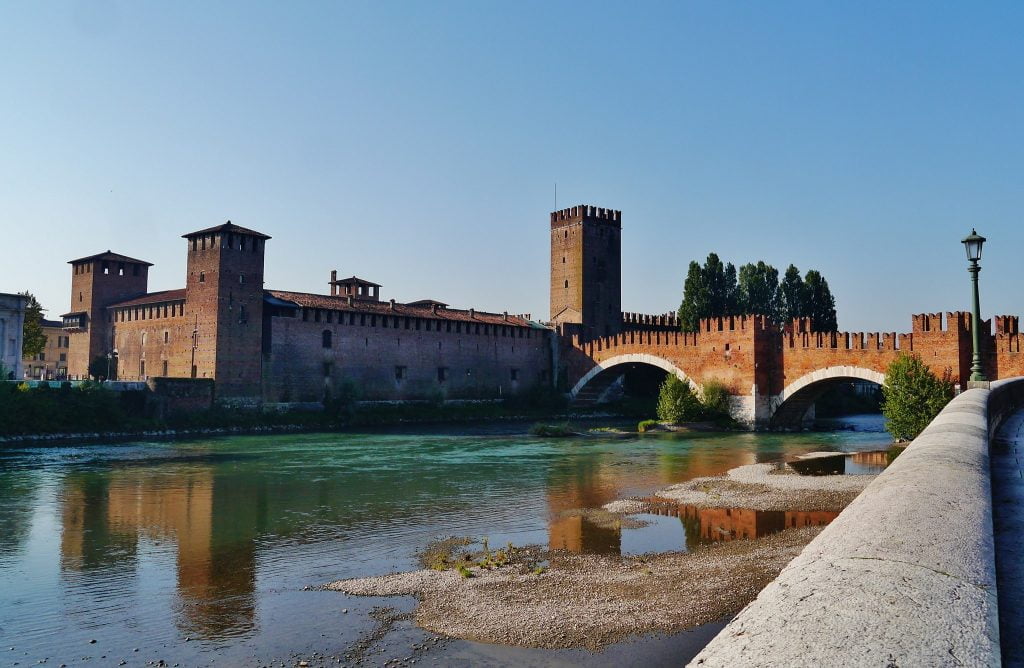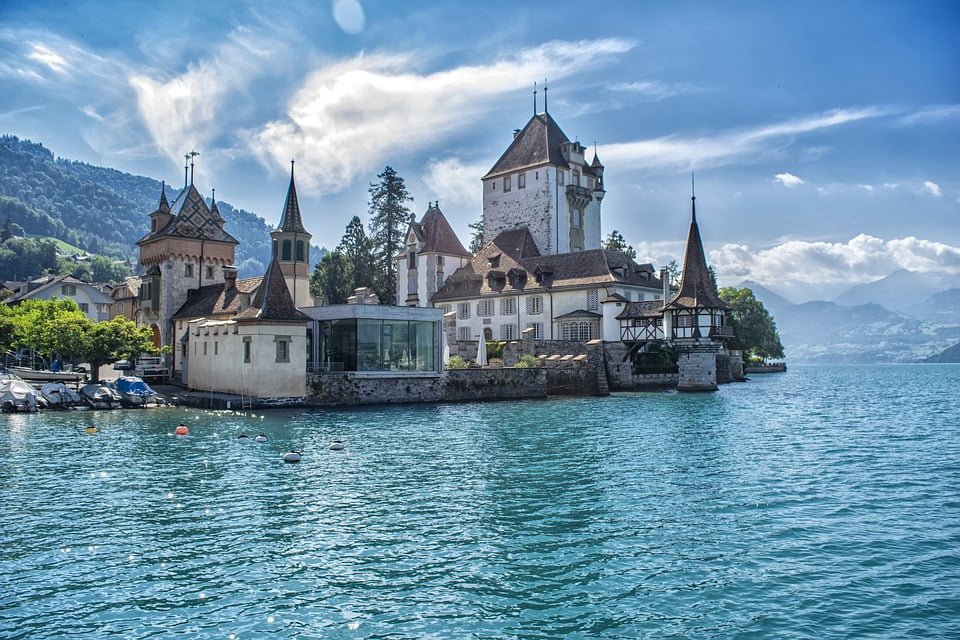Known as one of the largest castles in Luxembourg, Bourscheid Castle is a remnant of the medieval feudal period. The castle’s impressive structure with erected stone walls and Gothic towers mesmerizes the viewers. The enticing past etched on the castle walls, with splendid panoramic views visible from its vicinity, makes it a definite visit for history and nature lovers.
In the coming sections, we will take you along a journey from highlighting its glorious past with the reasons that make this castle worth a visit, followed by a detailed guide as to how you can visit this Luxembourg glory.
Table of Contents
The castle maintains a long history of chivalry as courage, with the lords of Bourscheid being the most respected and chivalric family of the region.
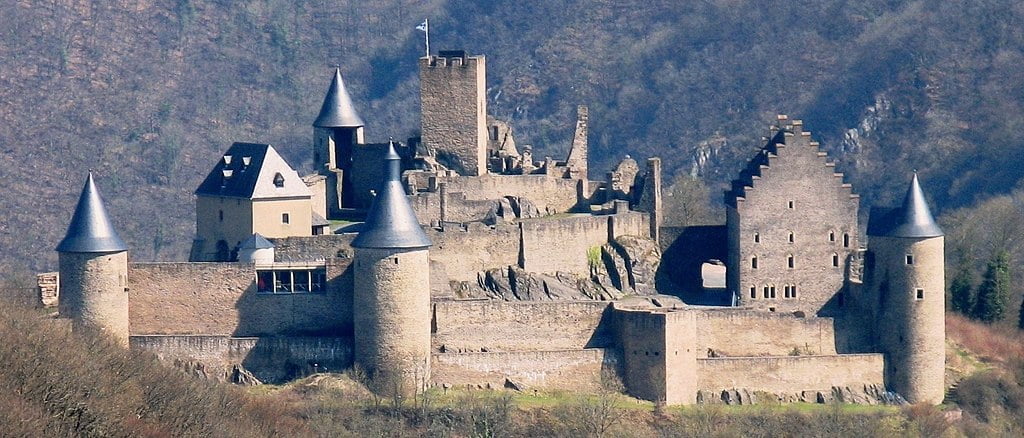
Frequently Asked Questions
Where is Bourscheid Castle Located?
The castle of Bourscheid is located in Schlasswee, 9140 Buerschent, in the country of Luxembourg.
When was Bourscheid Castle Built? Who Build It?
Archeologists believe that the castle was built somewhere around the 10th century by the lords of Bourscheid. The castle was later expanded in the 14th and 15th century, including the building of its Gothic towers.
When is The Best Time to Visit the Castle?
The castle is open for visitors all days throughout the year. If you want to enjoy the scenic views and the cozy summer breeze along with visiting this medieval beauty, the best time to visit the castle is from May to September.
What Other Monuments are Located Nearby?
There are numerous historical monuments within 30 km (20 miles) of Bourscheid Castle, including the National Museum of Art and History, Chateau De Vianden, Chateau de Clervaux, and Musee The Family of Man.
FOR HISTORY | BEAUTIFUL IMAGES | INTERESTING FACTS | TRAVEL TIPS
Early History
Early Construction of the Castle (10th century)
The castle first appeared on history pages concerning Lord of Bertram von Bourscheid, who is supposed to be the first resident of the castle. The initial construction of the castle dates back as far as 1000 AD. It is believed to be the first solid castle within Luxembourg where the primitive wooden fortifications were replaced with stone walls. The initial structure of the castle consisted of a little square near the gates, a chapel, and a small palace with an adjacent great hall surrounded by circular walls with four towers.
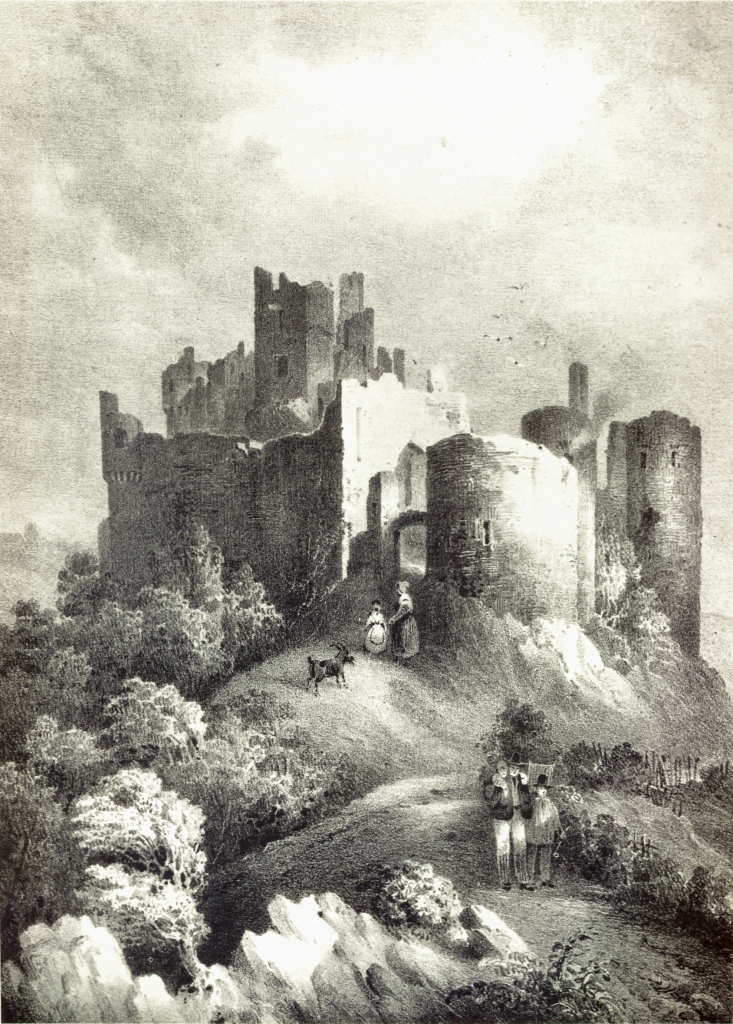
Expansion of Bourscheid Castle (14th Century)
The castle grounds were later expanded in the coming centuries, where the number of towers was doubled to eight, followed by the expansion of the outer circular wall. In 1384, almost three decades after the castle’s expansion, the Stolzemburger House was erected as a residential building.
With the eight towers, followed by the expansion of the great hall’s wall to a height of 10 meters (33 ft), along with the ditch dug behind the gateway to restrict access to the upper and lower castle, the defenses of Bourscheid Castle were maximized to prevent any intrusions.
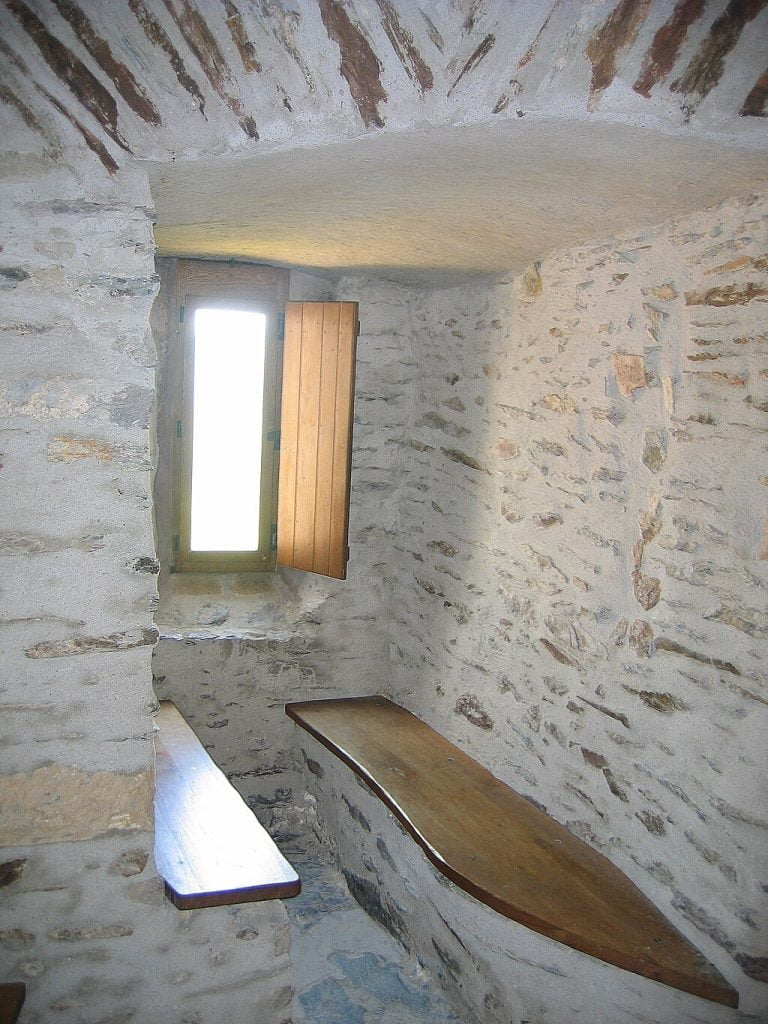
The collapse of Bourscheid Castle (16th Century)
The castle continued to serve as a defensive fortress for the residents till the 16th century when the last lord of Bourscheid died without a direct heir. As a result, the castle’s prospective heirs divided the castle into three separate dwellings: Metternich in the old palace, Zant of Merl in the lower part of the upper castle, and Ahr in Stolzemburger house.
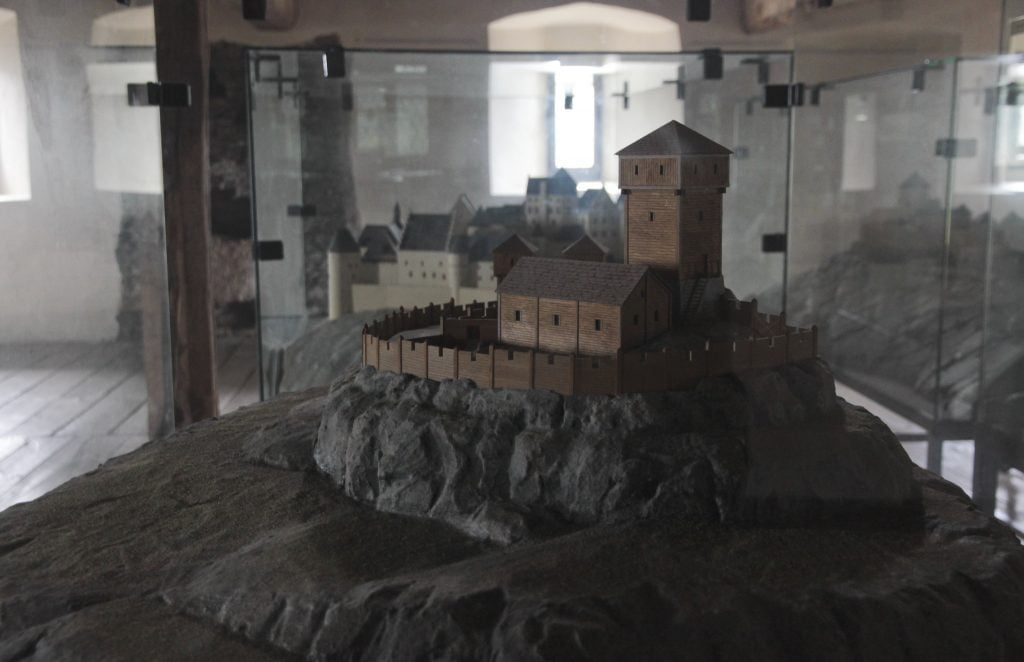
The divided dwellings did not last for long, and the residents had to abandon the castle due to France’s invasion of Luxembourg. The castle came under Heir Freiherr von Schmidtburg, the Chamberlain of the Elector and the Archbishop of Trier. Schmidtburg auctioned off bits of pieces of the castle in 1812, including the floorboards, doors, stairs, and numerous other valuables.
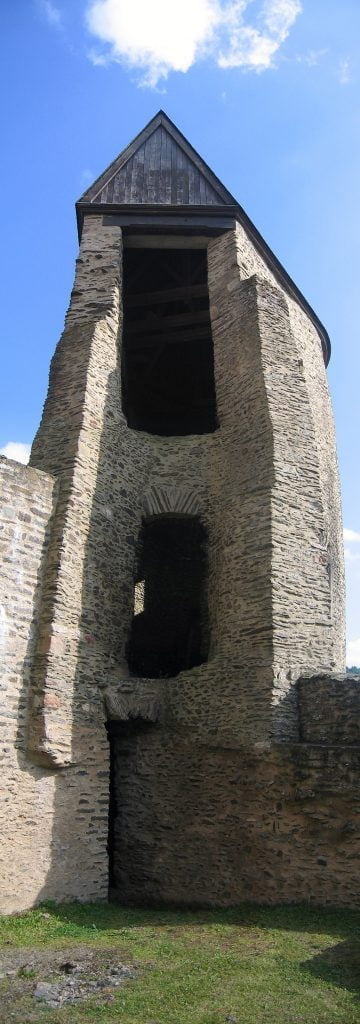
With the French Revolution putting an end to feudalism and no residents looking after the castle, the castle fell to ruins in the early nineteenth century.
Revisit More Historic Places Below or Read Further
Current Times
The ruins of Bourscheid Castle were recognized as ‘historical monuments’ in 1936, which triggered multiple excavations and archeological studies. The castle was later restored and opened up for the public to visit in 1972.
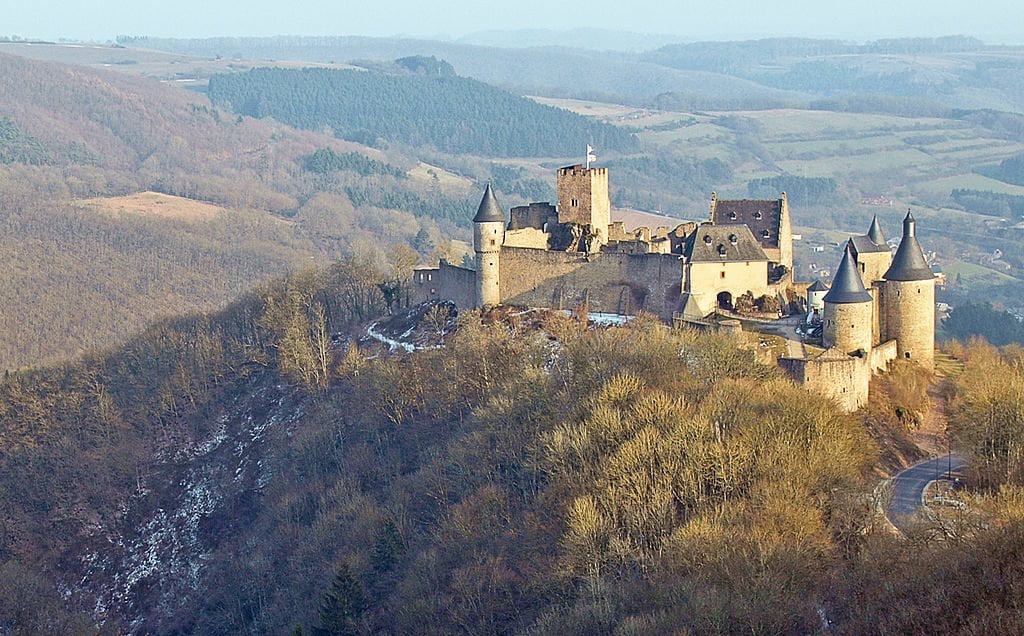
At present, the Stolzemburger house of the castle is used to hold cultural activities. In contrast, the gatekeeper’s house is restored as a museum that holds the artifacts reflecting the glory of Bourscheid Castle and the lords of Bourscheid.
Interesting Bourscheid Castle Facts
- Bourscheid Castle is one of the largest castles in Luxembourg.
- The castle’s expansion occurred in four phases beginning from the tenth century and extending to the fifteenth century.
- The castle maintains a long history of chivalry as courage, with the lords of Bourscheid being the most respected and chivalric family of the region.
- The archeological evidence from the site where Bourscheid Castle stands shows that the castle’s foundation dates back to Roman times.
Visiting Bourscheid Castle – Tips and Tricks
The castle is accessible to the general public to visit all days around the year. You can visit this historical wonder anytime by paying a small ticketing fee. To make your visit to Bourscheid a smooth journey, we have listed some of the necessary information and tips to look out for a while visiting Bourscheid Castle.
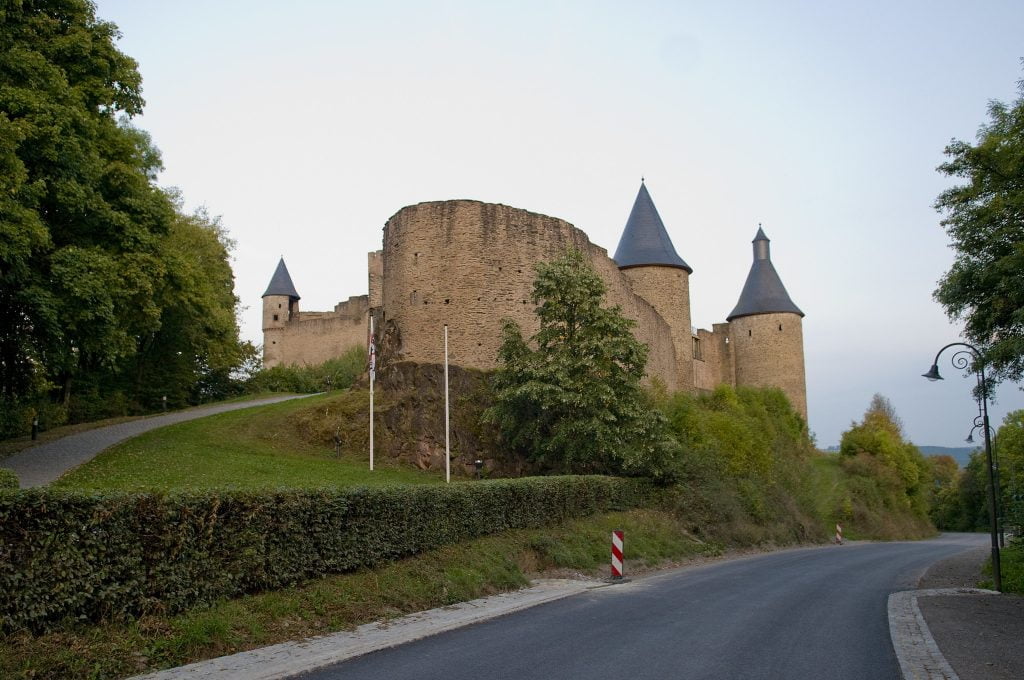
How to get to Bourscheid Castle?
The fastest and cheapest method to get to Bourscheid Castle is via train line 540 which costs around €2.6 ($3 USD). Whereas taking a taxi to the castle can cost you about €66 ($75 USD). You can also take your car since a car park is available right across the road from the main entrance to the castle.
Ticket Prices, Visiting Hours & Travel Tips
Information was checked & updated on October 29, 2023.
The castle is open for visitors all days around the year. However, the visiting hours may differ to match the country’s seasonal aesthetic. From April to October, the castle is open from 9:30 am to 6 pm. From Mid-October to March-end, the timings are from 11:00 am to 4:00 pm.
Bourscheid Castle’s grounds are free to visit since the ticketing office is located within the castle’s grounds and not at the front gate. Therefore, if you just want to take a casual stroll or take pictures at the castle’s front gate, you can do it for free.
If you wish to take a detailed look around the castle and visit the castle’s museum, a small fee of €7 ($9 USD) must be paid at the ticket counter. For students and elders above 65 years of age, the ticketing price is €5 ($6 USD). For children between 6-12 years of age, the price is €4 ($5 USD). Entry is free for children under five years of age. Discounts are also available for group tours.
The ticketing price includes a guided tour which is offered in six languages: English, Luxembourgish, German, French, Dutch, and Spanish. You can avail of the guided tour to learn more about the castle and its historical significance. The weather is the key feature to enjoy during your visit. You can enjoy foggy and cold walks around the castle during the daytime or can marvel over the beauty of the castle at night when the castle is beautifully lit.
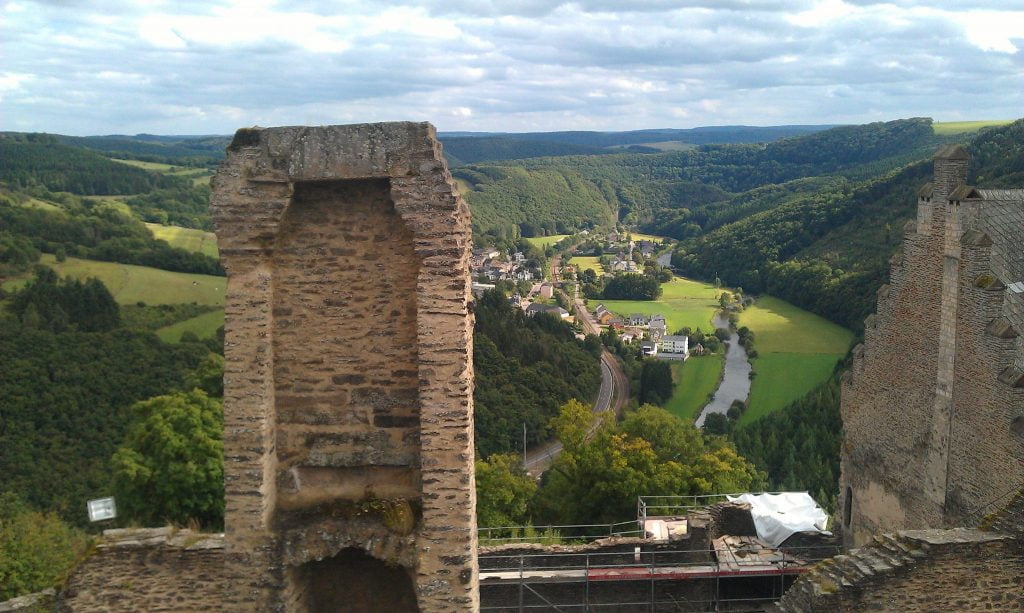
How Long Will It Take to Tour Around?
It can take up to 90 minutes to take a complete walk around the Bourscheid Castle, including Stolzemburger house and the castle’s museum.
Up to Date Information
For up to date ticket prices and visiting hours visit the official website: https://www.castle-bourscheid.lu/wp5/fr/
Some words of advice and tips:
- Only caged pets are allowed in the castle. Be mindful of this tip when bringing your pets along.
- You can avail free parking, available on the left side of the castle. However, there is limited parking space so plan accordingly.
- Some areas of the castle have uneven walkways. Be careful while strolling around.

